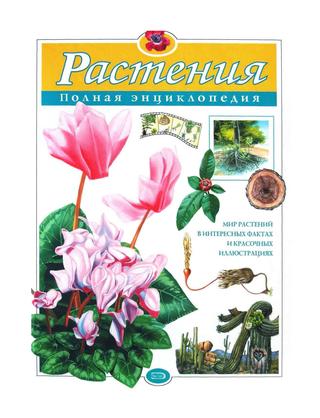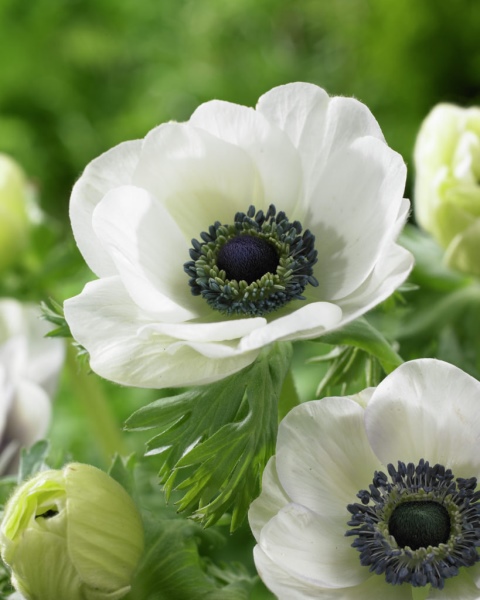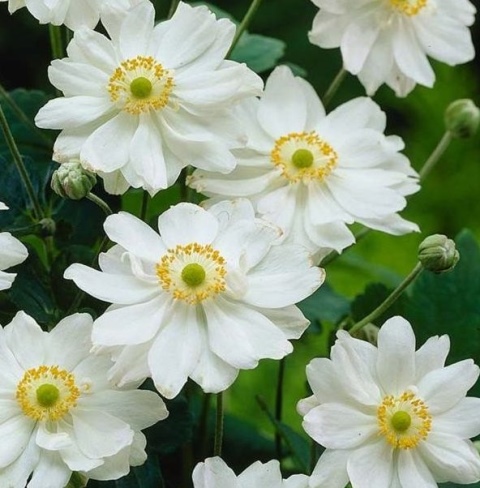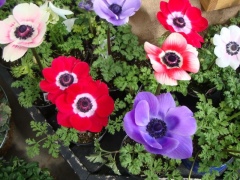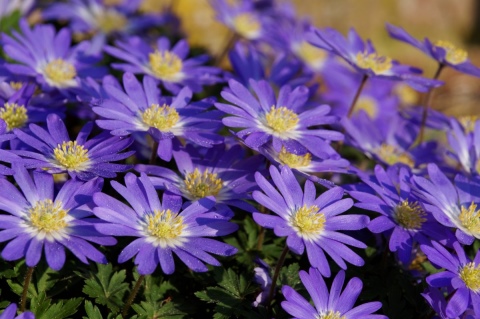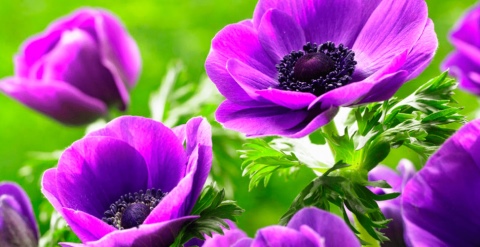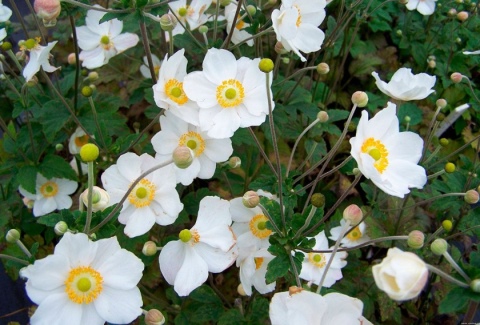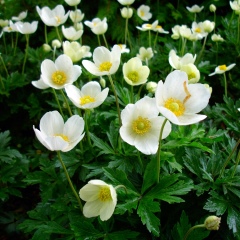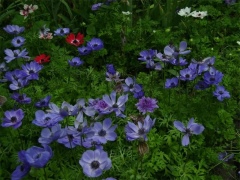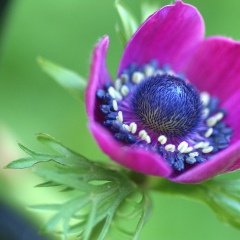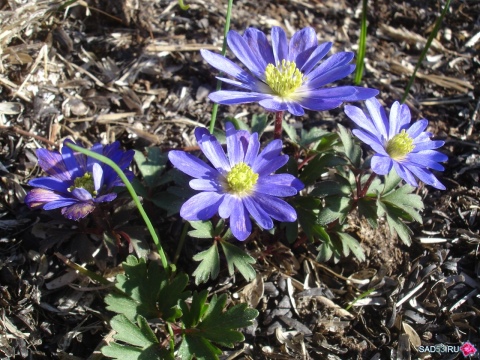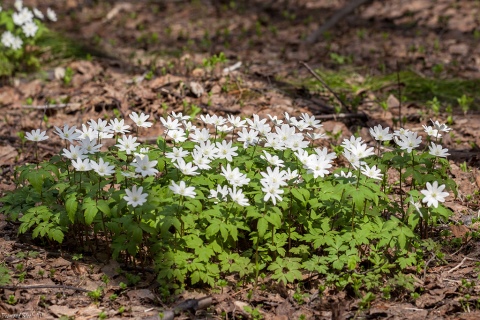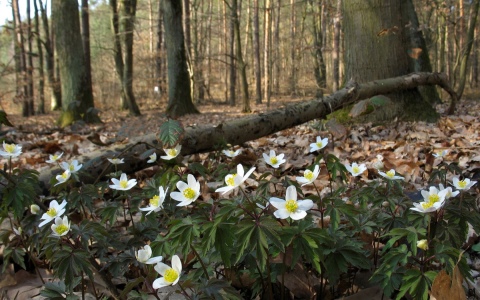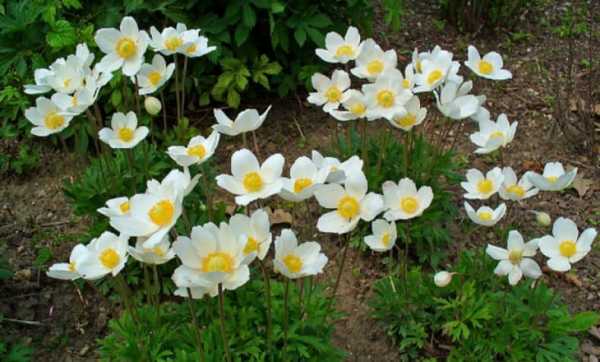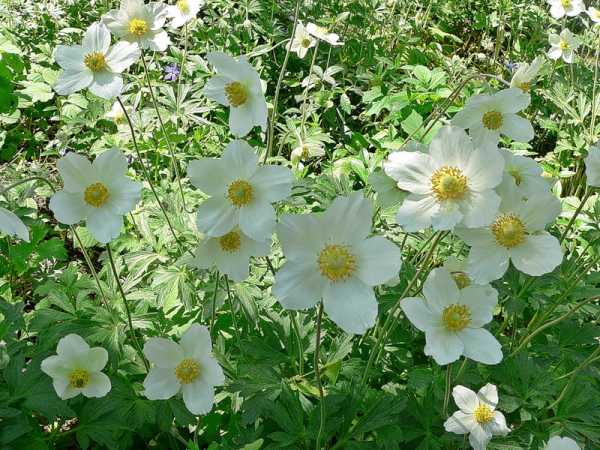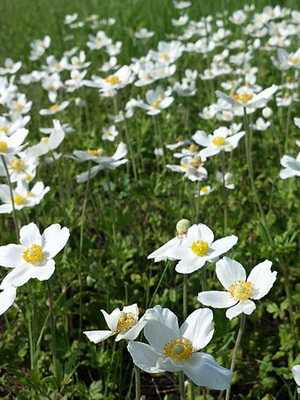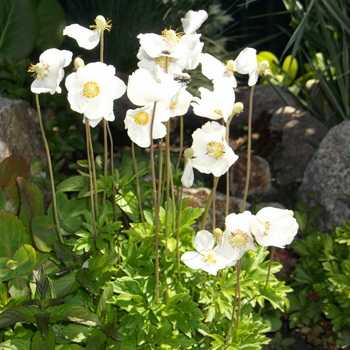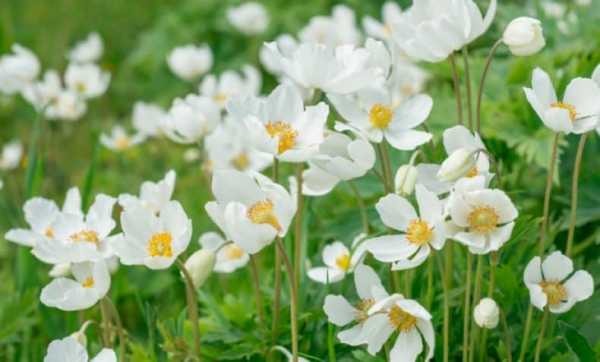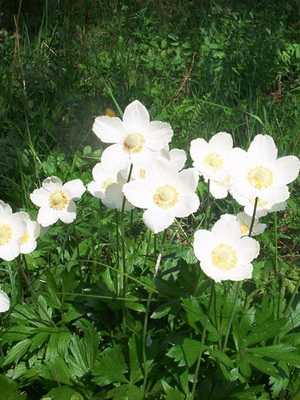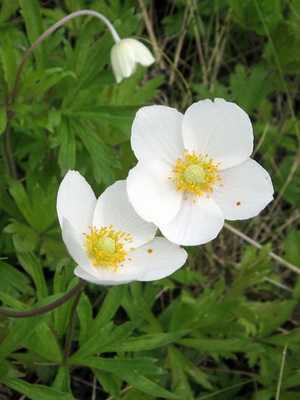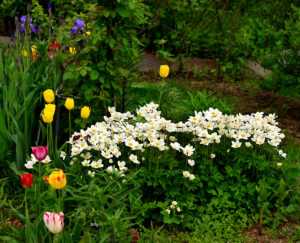Reproduction
Reproduction of Anemones is carried out in several ways - by seeds, vegetatively (by dividing a bush or rhizome) and tubers.
Growing from seeds is the least commonly used, since this process is fraught with certain difficulties (Anemone seeds are characterized by low germination). Stratification of the planting material is required within 1-2 months. For this, the seeds are mixed with peat or coarse sand at the rate of 3 parts of sand 1 part of seeds. In this case, it is necessary to constantly moisten this mixture until the seeds swell. When this happens, the planting material must be mixed with a small amount of the substrate, watered and placed in a well-ventilated room with an air temperature of no more than 5 ° C. A few days later, when the seeds germinate, the container with the seeds should be buried in the ground and sprinkled with straw or sawdust.
In early spring, they are transplanted into boxes for further germination. Planting grown seedlings in open ground is carried out after the appearance of two true leaves.
The vegetative propagation method is much easier, since in this case the grower already has ready-made material for planting. The essence of this method is to separate the perennial roots. This procedure should be performed in the spring, that is, before the perennial begins to sprout new shoots. Planting in spring also allows the seedlings to root well before the winter frosts.
When propagated by tubers, they are first soaked overnight in warm water. Similar actions are performed so that they swell and increase in size. This will contribute to faster germination of the planting material. For each tuber, you need to dig a hole with a diameter of about 30-40 cm and pour half a glass of ash, a small amount of humus and a nutrient mixture into it. The tubers are placed on the bottom of the hole with the side or pointed end down and then sprinkled with earth. Tubers need to be planted to a depth of no more than 5-10 cm; after planting, the soil must be slightly crushed and well watered. The soil can also be mulched to prevent the clod from drying out and weed growth. Tubers are planted both in spring and autumn.
Distribution and habitats
Anemones are northern plants rarely found south of the taiga zone. They are common in Scandinavia, Germany, Poland, in the north of the European part of Russia, in Siberia, they enter the Arctic, even in such harsh places as the Kola Peninsula, Yamal and Alaska.
Some species prefer a milder climate. For example, the Hubei anemone with a purple flower similar to the annual dahlia is found in Japan and China. The crown anemone has mastered the Mediterranean coast, including its African part. There are also endemics, including the Baikal anemone, listed in the Red Book of Russia.
 The plant, if consumed excessively, can cause serious poisoning.
The plant, if consumed excessively, can cause serious poisoning.
Most of the species are inhabitants of deciduous and mixed forests. Anemones love rare shrub thickets, forest edges, clearings, damp mountain valleys. Some, such as the Altai anemone, prefer subalpine meadows and rocky slopes. Poor tundra soil is common to Richardson's anemone.
Pests and diseases
Anemone is susceptible to many diseases. These include:
- Viruses - cause various diseases on perennials (browning, leaf spot, mosaic patterns, anomalies and growth retardation, variegation). Control measures: the affected plants are removed.
- Anthracnose is a mushroom that causes curly leaves, growth abnormalities. Young shoots are oppressed, which is why the Anemone bushes are funnel-shaped. To combat the fungus, the seedlings are carefully examined, and at the first symptoms of damage they are treated with Euparen and Cumulus.For the prevention of this disease, timely treatment with biologics Fitosporin-M and Planriz is needed.
- Sclerotiniasis - the root collar of the plant rots and it dies. With the further development of this disease, vegetative bodies of the fungus - sclerotia - appear in the soil around the plants. Methods of struggle: diseased plants are removed, and in order to prevent the further spread of sclerotia, plantings are treated with Rovral.
- Gray mold - diseased parts of the plant become watery and soft. With high air humidity, a gray bloom of sporangia appears on the Anemone. The disease is more common in spring and autumn, when damp, warm weather sets in after cold weather. To combat gray rot, old leaves and other affected perennial tissues are removed. Plants are not sprayed, they are protected from falling dew. Of the chemicals used Skor, Fundazol, Chistotsvet, Euparen, Ronilan, Rovral.
Pests that threaten Anemone include:
- Aphids - its presence can be recognized when the leaves are severely damaged (they turn yellow, curl, sticky secretions of aphids are formed on them). To combat, single colonies of aphids are washed off with water or cut off along with the leaves. In case of severe damage, treatment with Tobacco Dust, Antitlin, Fitoverm, Aktellik, Akarin, Decis, Aktara, Tanrek, Biotlin, Iskra, Komandor, Bison, etc. is necessary.
- Leaf nematodes - recognized by the yellow, brownish, angular spots that appear on the leaves of the plant. To combat this pest, the affected plants must be removed, and the healthy ones must be transferred to dry content. The foliage is not sprayed, diseased plants are not used for propagation.
What does an anemone look like and when does it bloom
In nature, there are about 100 species of anemone (anemone) from the Buttercup family. These are forest, meadow, mountain herbaceous plants characteristic of many landscapes of the temperate climate of the Northern Hemisphere. Some species are used in floriculture.
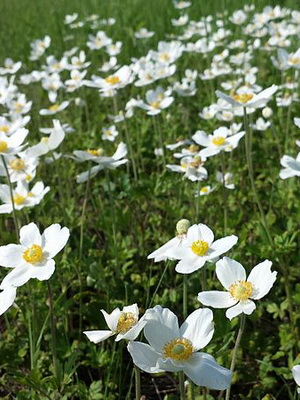

What does the different species of anemone look like and when do these plants bloom? In nature, the oak anemone and buttercup anemone are ubiquitous. These are early flowering perennial plants up to 20 cm tall with horizontal rhizomes. There is only one pinnately dissected basal leaf, but more often it is absent. Three similar leaves of the bracts on relatively long petioles form a whorl just below the medium-sized (about 3 cm in diameter) flowers.

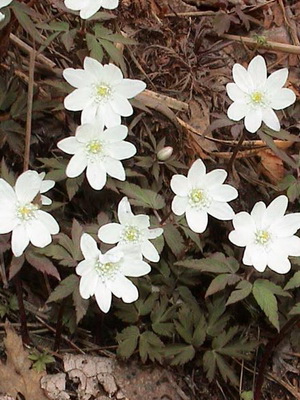
The flowers are solitary, they are white in the oak anemone, and yellow in the buttercup. They bloom in April-May, usually before the leaves bloom on the trees. In the middle of summer they fall into a state of rest. Garden forms with simple and double flowers of white, pink, blue and purple tones were obtained from the oak anemone. Both types of anemone give massive self-seeding, easily multiply by freshly harvested seeds and rhizome pieces.

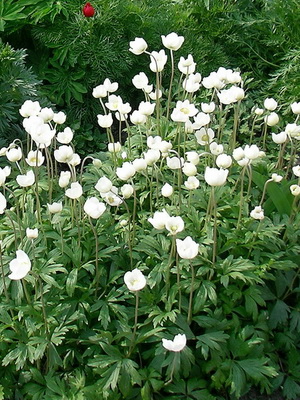
The forest anemone is one of the most beautiful representatives of this genus, but, unfortunately, it is extremely rare both in nature and in gardens. Plant height 25-30 cm. Has from 2 to 6 pinnately dissected openwork basal leaves.
Unlike other early spring species, the forest anemone gives the second generation of leaves, retaining its decorative effect in summer.
Pay attention to the photo, in the plant anemone forest bracts are located in the middle part of the peduncle, and not near the flower itself, as in the anemone of the oak tree:
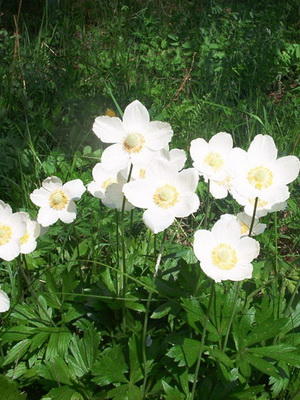
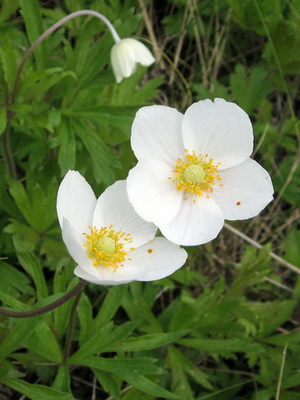
The flowers are single, large (up to 7 cm in diameter), white, with a pleasant aroma, outside at the base with a purple tint, silky, pubescent. And when does the forest anemone bloom and how does it reproduce?
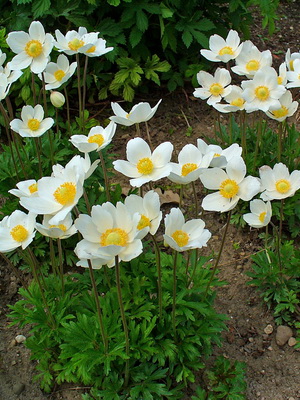
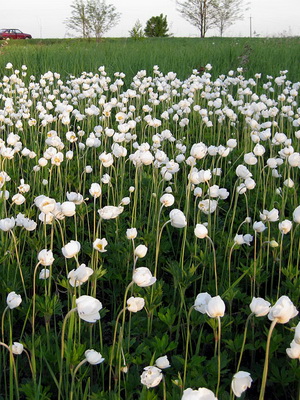
Flowering of this species of plants is long, falls on April-May, propagates both by seeds and by dividing rhizomes. Prefers calcareous and sandy soils.
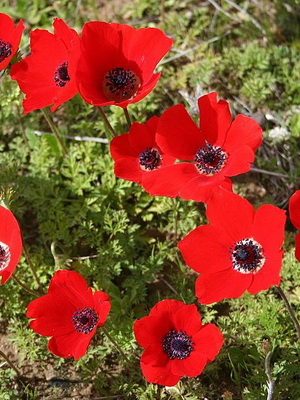

Anemone crown in nature grows in the Mediterranean and Asia Minor. A herbaceous perennial, the underground part of which is a knobby "spreading" tuber.Above the basal pinnately dissected leaves there are flower stalks 25-30 cm high with large, single, bright flowers of various colors - red, blue, white, pink, lilac, bluish. There are varieties that have flowers with a border or spots of a different tone.
As you can see in the photo, the flowers of this species of anemone can be either simple or double or semi-double:

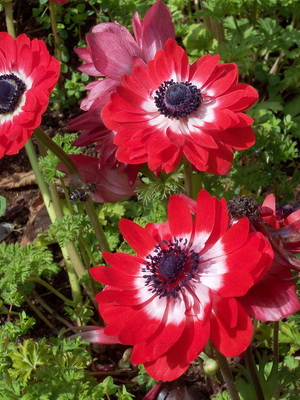

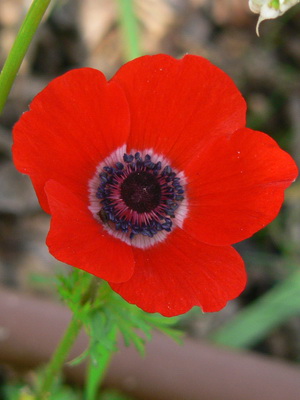
In the middle lane, plants bloom in May and June. They do not hibernate outdoors. They are cultivated like dahlias - the tubers are dug up in the fall and stored in a frost-free room, they are planted in the ground in the spring. When dividing the tubers, you need to be careful, as they are very fragile. Fracture points are sprinkled with charcoal. It can also be propagated by seeds, which are sown in autumn or spring.
The crown anemone is widely used for cutting in the winter. It can be driven out on certain dates (New Year, February 23, March 8), growing seedlings in a greenhouse.
Look at the photo of what different types of anemone look like:
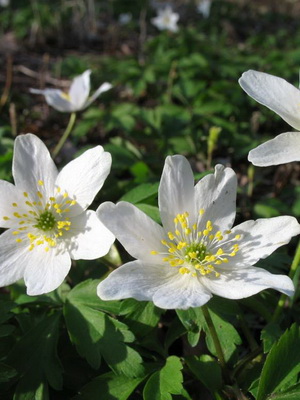
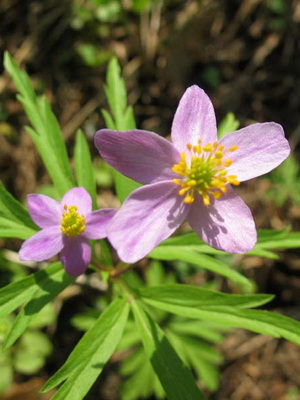
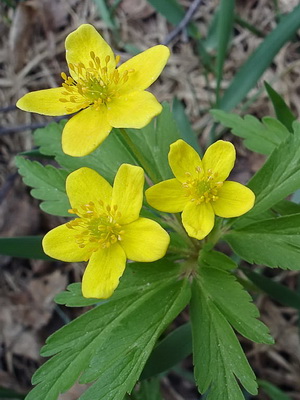

Recipes for funds
From anemone, mainly oak grass, they prepare decoctions, infusions, alcoholic tinctures. There are many recipes for internal use spread on the Internet. However, it is best to limit yourself to external use.
Tincture for joints
What heals. Joint pain, arthritis, arthrosis, rheumatism. Reviews indicate that this effective remedy eliminates pain, swelling, improves joint mobility.
- Place dry leaves weighing 100 g in a glass or enamel dish.
- Pour 1 liter of quality vodka.
- You can also use rubbing alcohol in the same amount.
- Close the container and put it in a dark place.
- Keep for ten days, shake sometimes.
- Strain through a fine sieve, gauze.
- Apply in the form of rubbing up to twice a day in case of joint, rheumatic pain.
Infusion for skin diseases
What heals. Dermatitis, dermatoses, poorly healing wounds. There are recommendations for using the drug inside for kidney diseases, cystitis, for removing stones
But for the treatment of renal diseases, use with caution and after consulting a doctor
- Take the herb of anemone oakgrass in the amount of one tablespoon fresh or a teaspoon of dried.
- Pour a glass of plain cold water over.
- Insist six to eight hours.
- Strain.
- Wash skin areas with dermatitis, dermatosis, poorly healing wounds, or apply lotions.

Cancer tincture
What heals. Poisonous substances in the composition of anemone, especially buttercup, are considered capable of fighting cancer. They inhibit the development of tumors
It is necessary to prepare and use the product with great care and after consulting a doctor.
- Work outdoors and always wear gloves.
- Pass the dried herb anemones with leaves and flowers through a meat grinder.
- Take a glass of loose chopped herbs.
- Fold into a jar and pour 500 ml of quality vodka.
- Remove to a dark place for two weeks.
- Strain well.
- Store in a refrigerator, cellar.
- In oncology, dissolve 20 drops of the agent in 100 ml of water and drink three times a day before meals.
- Before the first dose, dissolve the tincture in water, and lubricate the skin at the bend of the elbow or behind the ear with the liquid. It is believed that a remedy from which a slight burning sensation is felt will be effective. If the discomfort is strong, you need to reduce the number of drops. If, on the contrary, nothing is felt, add tinctures. Thus, find the most suitable proportion.
In addition to the therapeutic effect, anemones are also valued for their decorative qualities. All of them can be used in landscaping and gardening. The most valuable in this respect is the crown anemone, which has a wide variety of colors. However, both the forest anemone and the buttercup form quite pretty thickets. As a garden decoration, they are more preferable than for medicinal purposes.
Possible growing difficulties
Possible reasons why the anemone does not bloom are:
- inappropriate place;
- improper care;
- insufficient feeding.
This plant is resistant to diseases. On the bushes, snails or slugs may appear. They are harvested by hand, and the flower is sprayed with metaldehyde. Infected bushes with nematodes or caterpillars are dug up and burned. The soil at this place is changed to a new one.
Note! To determine the presence of a nematode, it is required to examine the leaves of the plant. Yellow spots with a brown tint appear on them.
Further, the leaves darken, dry out, and the plant dies.
The appearance of a mosaic disease is also possible. With it, spots of various sizes and colors appear on the foliage. There is no effective way to treat this ailment, so it is necessary to remove the bushes.
When aphids and spider mites appear, the plant is sprayed with insecticides or infusion of garlic.
Caring for an anemone is an easy process. Even a novice florist can handle this. The main thing is to observe moderate humidity. It is possible to propagate the plant by dividing the bush or by seeds. The seed method will take more time and effort. When growing a flower in the Urals and northern regions, the tubers are dug up for the winter and left to be stored in boxes covered with earth.
Care
It doesn't take long to care for anemones
It is important to organize proper watering in such a way that there is no waterlogging of the soil, but at the same time it should not dry out completely
Periodically, once a month, a mineral complex of fertilizers is applied. In this case, they are applied only to wet soil so as not to damage the root mass of the plant. But if, after these dressings, the green mass of the bush increases, and the flowering becomes less attractive, it is necessary to stop the dressing and the flowering to recover. After watering, the next day, loosening is carried out with the simultaneous removal of weeds.
It must be remembered that with the onset of summer, when the ambient temperature rises, the anemone stops blooming and its aboveground mass dies off. At this time, in the middle latitudes, it digs up tubers and dries them for further storage. The southern regions occasionally watered the place where the anemones grew, and for the winter period they cover the planting of flowers with spruce branches or covering material for insurance. But you need to cover if there is no snow in the region.
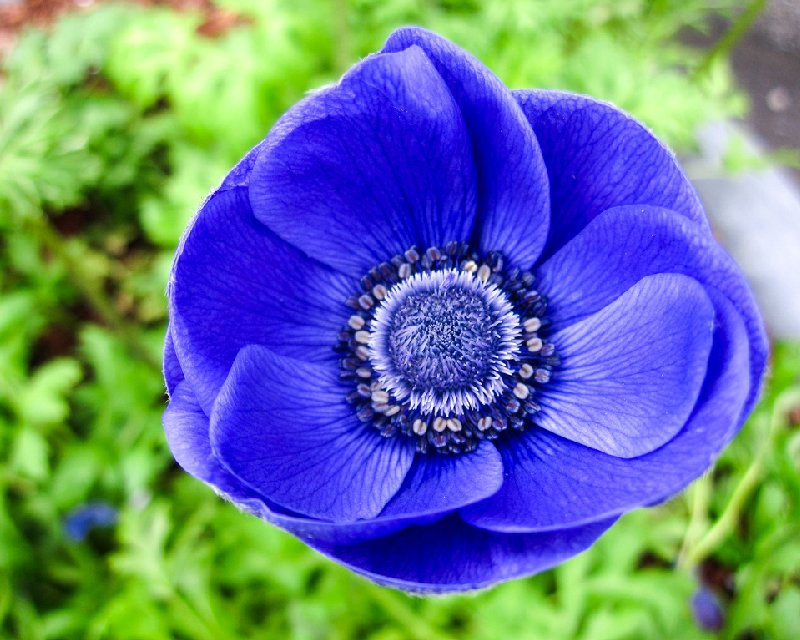
Anemone care
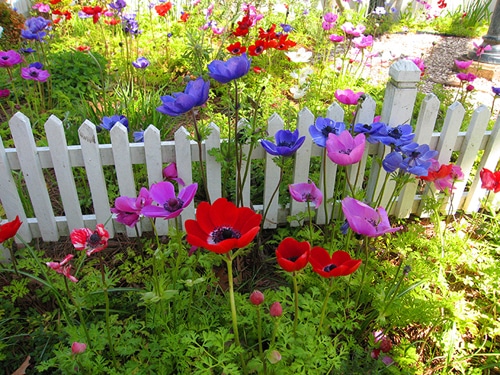
Caring for an anemone is very simple. The most important thing is to ensure the correct moisture level throughout the growing season. If the soil is waterlogged, then rot may appear on the roots, which will lead to the death of the entire bush. If there is not enough moisture, especially during the formation of buds, this will negatively affect the growth and flowering of the plant. To achieve the optimal level of humidity, such a flower must be planted on a hill, while the site must have good drainage. It is recommended to cover the surface of the area with planted anemones with a layer of mulch (peat or leaves of fruit trees), its thickness is about 50 mm.
Watering
In springtime, such flowers need to be watered once every 7 days. If it rains regularly in summer, then you do not need to water the anemones, except for the crown anemones when it blooms. If it is dry and hot in summer, then watering is carried out every morning and evening after the sun goes down.
Top dressing
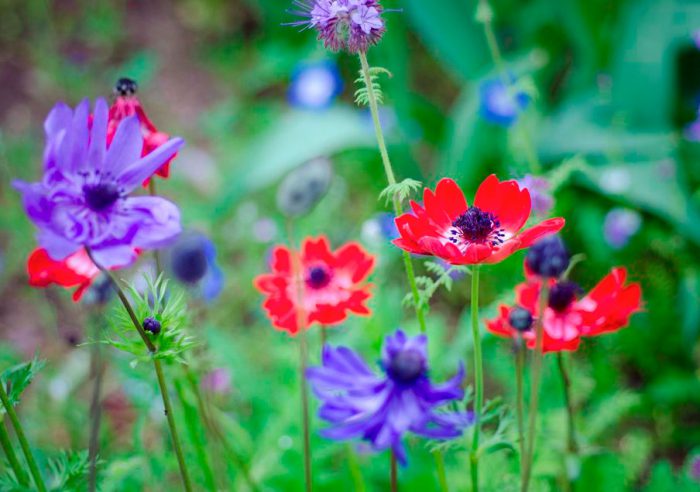
During the flowering period, such a plant should be provided with organic feeding (only fresh manure cannot be used). And in the fall, you need to feed them with a complex mineral fertilizer. If all the necessary fertilizers were added to the soil during planting, then there is no need to feed the anemone at all.
You should also systematically loosen the soil and pull out weeds, while a hoe cannot be used for weeding, since there is a risk of injury to the fragile system of flower roots.
Diseases and pests
This plant is resistant to disease. Snails or slugs can settle on the bushes. They must be picked by hand and the plants themselves are sprayed with metaldehyde.Sometimes leaf nematodes or caterpillars of the scoop (winter worm) settle on the bushes. Bushes infected with a nematode must be dug up and burned, while the soil on the site must be replaced.
Anemone breeds
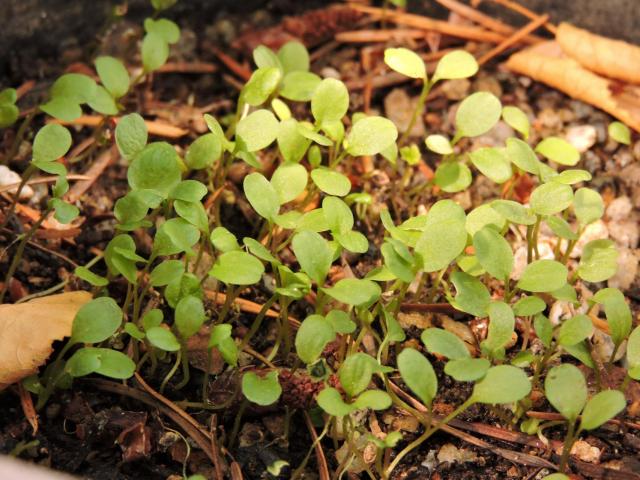
Such a flower can be propagated by dividing the rhizome, seeds, tubers, or dividing the bush. How to grow an anemone from seeds and propagate with tubers is described in detail above. To divide the rhizomes in the spring, they must be removed from the soil and divided into parts, the length of which should be 50 mm. A kidney should be present on each cut, they are planted in loose soil, placed horizontally and buried by only 50 mm. Such anemone will be fully mature only after 3 years. If the plant is 4 or 5 years old, then it can be transplanted with the division of the bush.
After flowering
When growing anemones in mid-latitudes in the fall, they need to be dug up and prepared for wintering. For dried tubers, it is necessary to remove the aboveground part, then they are buried in sand or peat and stored in a cool dark room, for example, in a non-damp basement. If it is assumed that there will be no frost in winter, then the flowers can be left in the soil. For this, the surface of the site must be covered with a thick layer of loose leaves or covered with spruce branches, which will save the plants from frost.
Anemone: landing features
For planting in garden plots, the following varieties of anemones are usually chosen:
- de Caen.
- Blanda.
- Bridget.
- Crowned anemone.
- Sylph.
Whichever flower variety is chosen, any of them, with proper care, will delight the gardener's eye. Before planting this plant, you need to find the right place. Any variety of anemones will be poorly accepted and grow in conditions of constant drafts or gusts of cold winds. Therefore, you need to choose a place that is sheltered from these unpleasant phenomena.

Depending on the love for the sun, anemones are divided into three types:
Shadow lovers: Amur, Altai. The ideal place for anemones of these varieties would be shade under trees or among bushes.
It is important that direct sunlight does not fall on such a place, which means that moisture in the soil remains longer.

Canadian, forked and forest anemones grow well in the shade, but they need the sun's rays, albeit in small quantities. It is best to plant these varieties in the east, near low shrubs or trees, with a crown that allows the sun's rays to pass through a little.
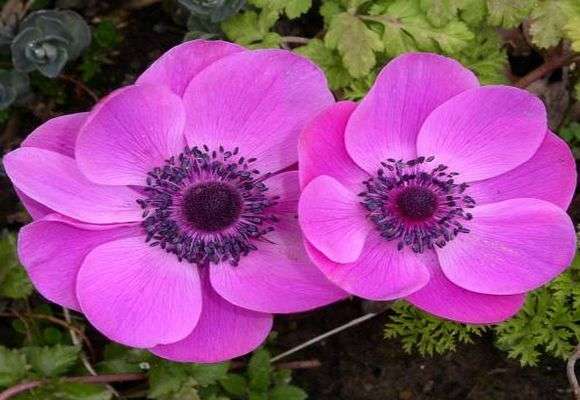
Caucasian anemones, crown and some other varieties, cannot grow without the sun. They tolerate a lack of moisture well and love good lighting. Therefore, the southern side of the site is uniquely ideal for their disembarkation.

The soil of the anemone flower prefers loose, fertile, with a small amount of alkali in the composition or completely neutral. In the event that the soil that is in the garden area is too acidic, it can be slightly diluted with ash, and also fertilized with humus.
What time should the tubers be planted? As a rule, tubers act as planting material for anemones. In springtime, when the sun has already warmed up the earth a little, and the frosts have gone to the side, the ideal time for planting them comes. In the event that the tubers were bought ahead of time, and the weather does not allow them to be planted on the site, it is imperative to place them in a flower box, in a cool room, from where they can then be planted in the ground.
 Anemone tubers
Anemone tubers
Before planting, the tubers are soaked in water for about three hours, then planted in pots with peat so that the anemones are saturated with useful substances. In the open ground, small holes are made (about thirty centimeters in diameter and ten centimeters deep). At the bottom of which it is imperative to lay out humus and ash. After planting the tubers, they must be watered.
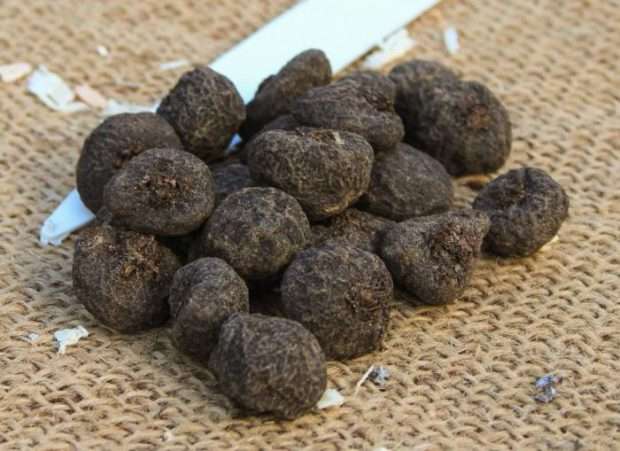
As soon as the tubers sprout, you need to strengthen the care of them.
It is important not to overdo it here, especially in terms of watering.The fact is that from excess moisture, the roots of the tubers can rot and disappear.
Therefore, even at the stage of planting tubers, it will not be superfluous to lay a little drainage on the bottom of the holes, which will remove excess liquid from the roots. In order for the topsoil not to dry out too quickly, it is imperative to mulch the base of the flower.

Watering the anemones is necessary in the evening and morning, strictly under the stem. But, only if the weather is very hot. During the rainy season, additional watering should be postponed. Anemone, which is easy to plant and care for in the open, still requires some knowledge of the nuances, observing which, you can grow a flower worthy of admiration.

